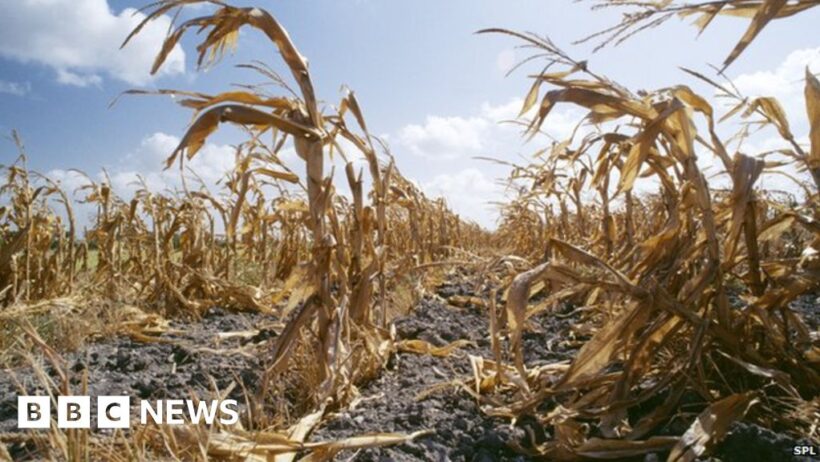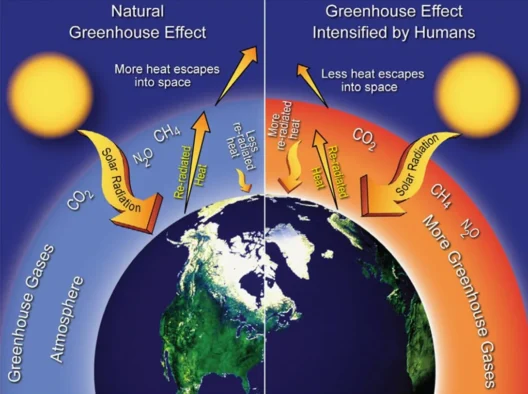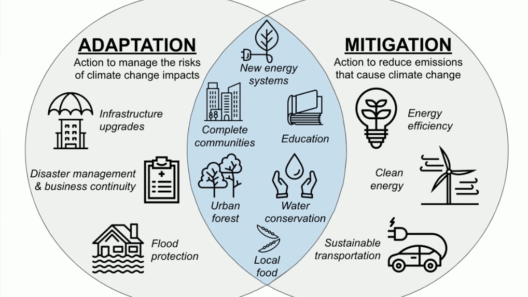In an era characterized by climatic upheaval, understanding the intricate nexus between global warming and food production becomes paramount. The warming of the planet, attributable to anthropogenic emissions of greenhouse gases, is not merely an environmental issue; it has far-reaching implications for global food security. This article delves into how rising temperatures, altered precipitation patterns, and extreme weather events contribute to a precarious food supply, thus consolidating the paradigm of “From Fields to Famine.”
Global warming is predominantly driven by carbon dioxide emissions from fossil fuel combustion, deforestation, and industrial processes. As atmospheric temperatures escalate, so too does the likelihood of anomalous weather patterns. These climatic shifts have insidious effects on agriculture, the backbone of global sustenance. To comprehend these impacts, it is essential to explore various dimensions: crop yields, soil health, water availability, and pest dynamics.
Crop yields are perhaps the most apparent victim of climatic changes. Many staple crops, such as wheat, rice, and maize, exhibit diminished productivity under conditions of elevated temperatures. Research indicates that for each degree Celsius increase in temperature, the yields of these crucial crops could decline by 10% or more. Moreover, plants subjected to severe heat stress may suffer from reduced photosynthesis, leading to lower growth rates and ultimately, meager harvests. Such declines invariably place immense pressure on food systems, particularly in developing countries reliant on subsistence farming.
The relationship between temperature and crop growth is intricate. Beyond mere yield reductions, the quality of produce is also at stake. Higher temperatures can adversely affect the nutritional content of crops, diminishing the levels of essential vitamins and minerals. Maize, for instance, may experience reduced iron and zinc concentrations under higher temperature regimes. This degradation in nutritional value exacerbates public health challenges, particularly in vulnerable populations already facing malnutrition.
Alongside the direct impacts of temperature lies the looming specter of water scarcity. Agriculture accounts for approximately 70% of global freshwater usage, and the availability of this precious resource is increasingly under threat from climatic changes. Droughts, exacerbated by global warming, can precipitate catastrophic declines in crop productivity. Conversely, intense rainfall can lead to flooding, which not only destroys crops but also erodes soil integrity, further compounding water-related issues. In regions already grappling with water insecurities, these fluctuations can precipitate dire humanitarian crises.
Soil health constitutes another critical element of agricultural viability. Healthy soil is a complex ecosystem, teeming with organisms that facilitate nutrient cycling and bolster plant health. However, climate change disrupts this balance. Higher temperatures can accelerate the decomposition of organic matter, leading to nutrient depletion. Additionally, increased rainfall can lead to soil erosion, depleting topsoil—a vital layer for plant growth. The degradation of soil quality necessitates heightened reliance on chemical fertilizers, which can further damage the environment through runoff and pollution. The cyclical nature of these impacts creates significant challenges for sustainable agriculture practices.
Pest dynamics present yet another layer of complexity in this evolving narrative. Warmer temperatures can expand the habitat range for various agricultural pests and pathogens. The proliferation of these nuisances due to climate change poses a formidable threat to crop stability. Insect pests that once thrived in temperate climates are now making inroads into formerly inhospitable regions. Furthermore, altered climate patterns can disrupt natural predator-prey relationships, allowing pests to flourish uncontrollably. This necessitates increased pesticide use, which carries its own environmental and health consequences.
Food systems are profoundly interlinked with global trade networks. Disruptions to agricultural yields invariably ripple through these systems, affecting prices and accessibility. Countries that rely heavily on food imports may find themselves particularly vulnerable to fluctuations in agricultural production caused by climatic adversities. Such vulnerabilities can precipitate food crises, leading to civil unrest and geopolitical tensions. In essence, the impact of global warming is not insulated—it reverberates through economies and societies worldwide, highlighting the imperative for robust action.
Mitigation and adaptation strategies become crucial in addressing the deleterious effects of climate change on food security. Innovative agricultural practices, such as crop rotation, agroforestry, and the increased use of drought-resistant crop varieties, can enhance resilience in food systems. Additionally, integrating technologies such as precision agriculture may optimize resource allocation while reducing environmental impacts.
Public policy plays a critical role in fostering resilience against the backdrop of climate change. Governments must prioritize investments in research and development aimed at sustainable agricultural practices. Policymaking should facilitate access to resources for smallholder farmers, who are often the most adversely affected by climatic changes. Addressing the systemic issues within food distribution networks is imperative to fortify global food security.
The challenge of global warming requires a multifaceted response that encompasses environmental stewardship, innovation in agricultural practices, and rigorous policy frameworks. Collectively addressing these issues is not merely an environmental imperative; it is a moral one. The ramifications of failing to act will be felt across generations, ultimately culminating in widespread food insecurity and the specter of famine.





